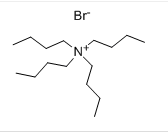1. Quaternary ammonium salts are compounds formed by replacing all four hydrogen atoms in ammonium ions with alkyl groups.
They are a cationic surfactant with excellent bactericidal properties, and the effective part of their bactericidal activity is the cationic group formed by the combination of organic roots and nitrogen atoms.
2. Since 1935, when Germans discovered the bactericidal effect of alkyl dimethyl ammonium gasification, they used it to treat military uniforms to prevent wound infection. The research on quaternary ammonium salt antibacterial materials has always been a focus of researchers' attention. Antibacterial materials prepared with quaternary ammonium salts have good antibacterial properties and can be widely used in many fields such as medicine, water treatment, and food.
3. The functions of quaternary ammonium salts include:
Agricultural fungicides, public place disinfectants, circulating water disinfectants, aquaculture disinfectants, medical disinfectants, livestock and poultry house disinfectants, red tide disinfectants, blue-green algae disinfectants, and other sterilization and disinfection fields. Especially Gemini quaternary ammonium salts have outstanding bactericidal effects and low overall costs.
Tetrabutylammonium bromide(TBAB), also known as tetrabutylammonium bromide。
It's an organic salt with the molecular formula C ₁₆ H 36 BrN.
The pure product is a white crystal or powder, with deliquescence and a special odor. It is stable at room temperature and atmospheric pressure. Soluble in water, alcohol, and acetone, slightly soluble in benzene.
Commonly used as an intermediate in organic synthesis, phase transfer catalyst, and ion pair reagent.
Post time: Jul-02-2025






